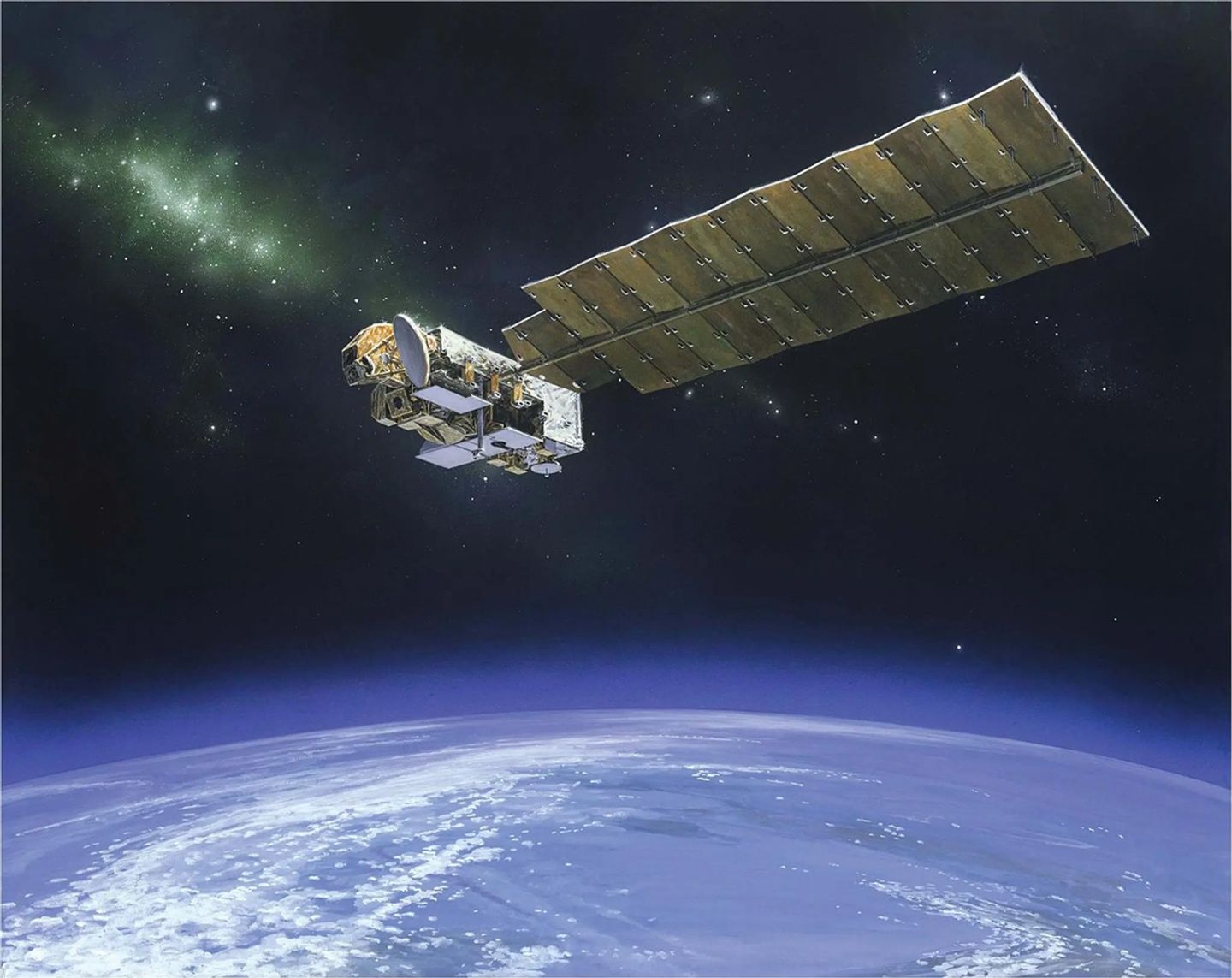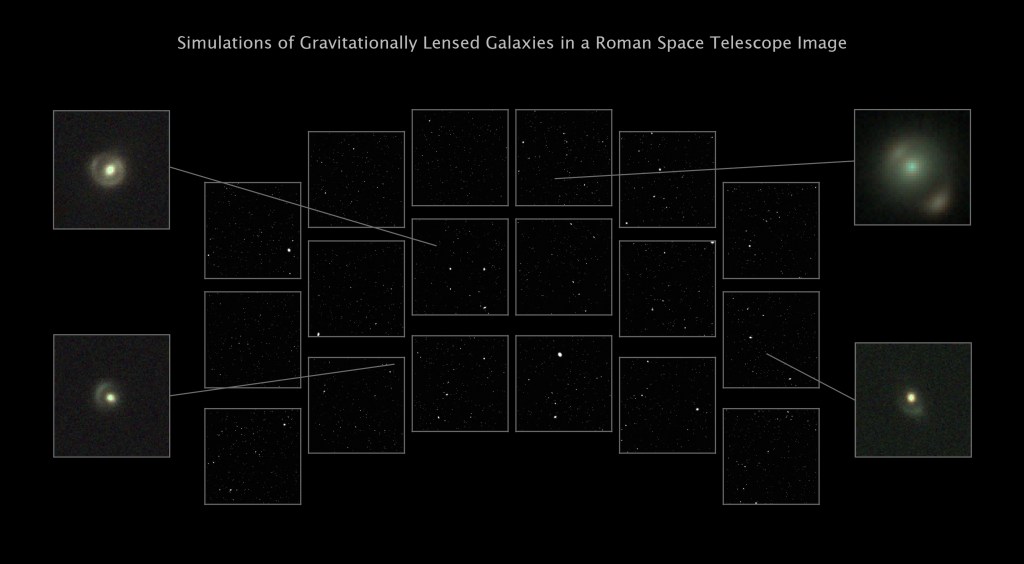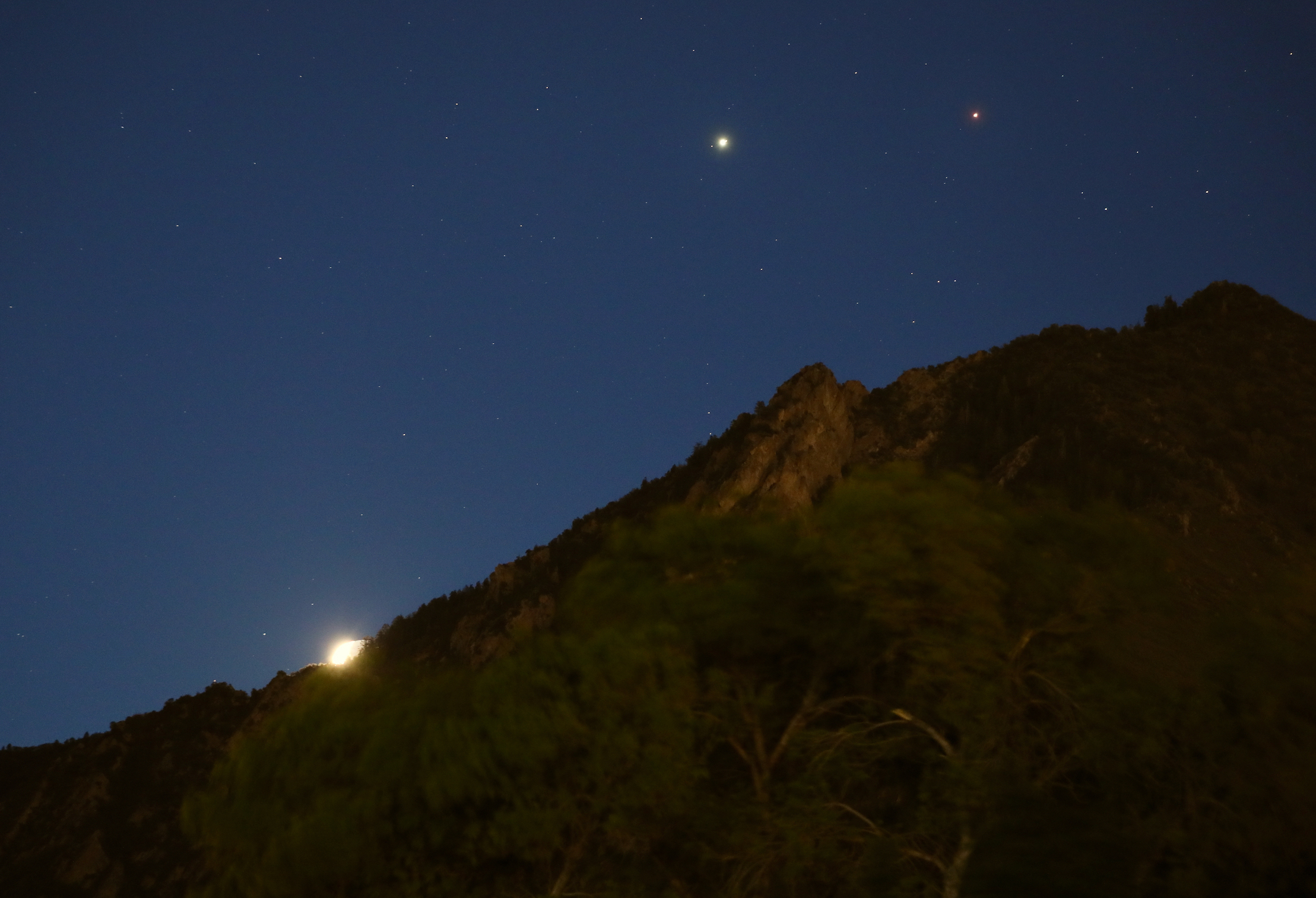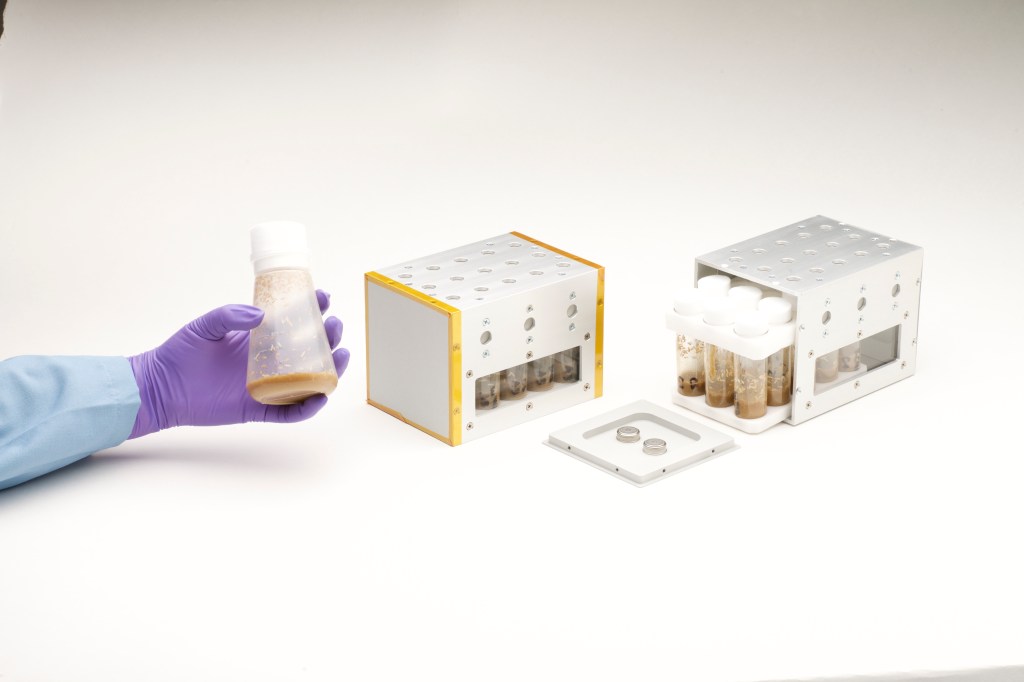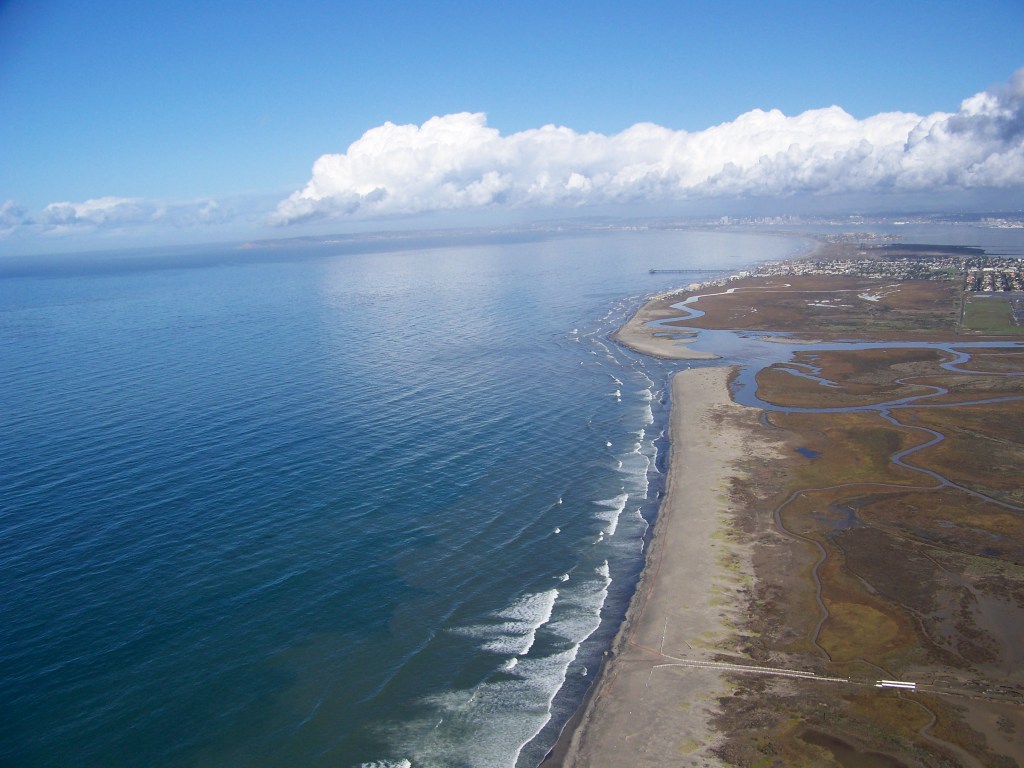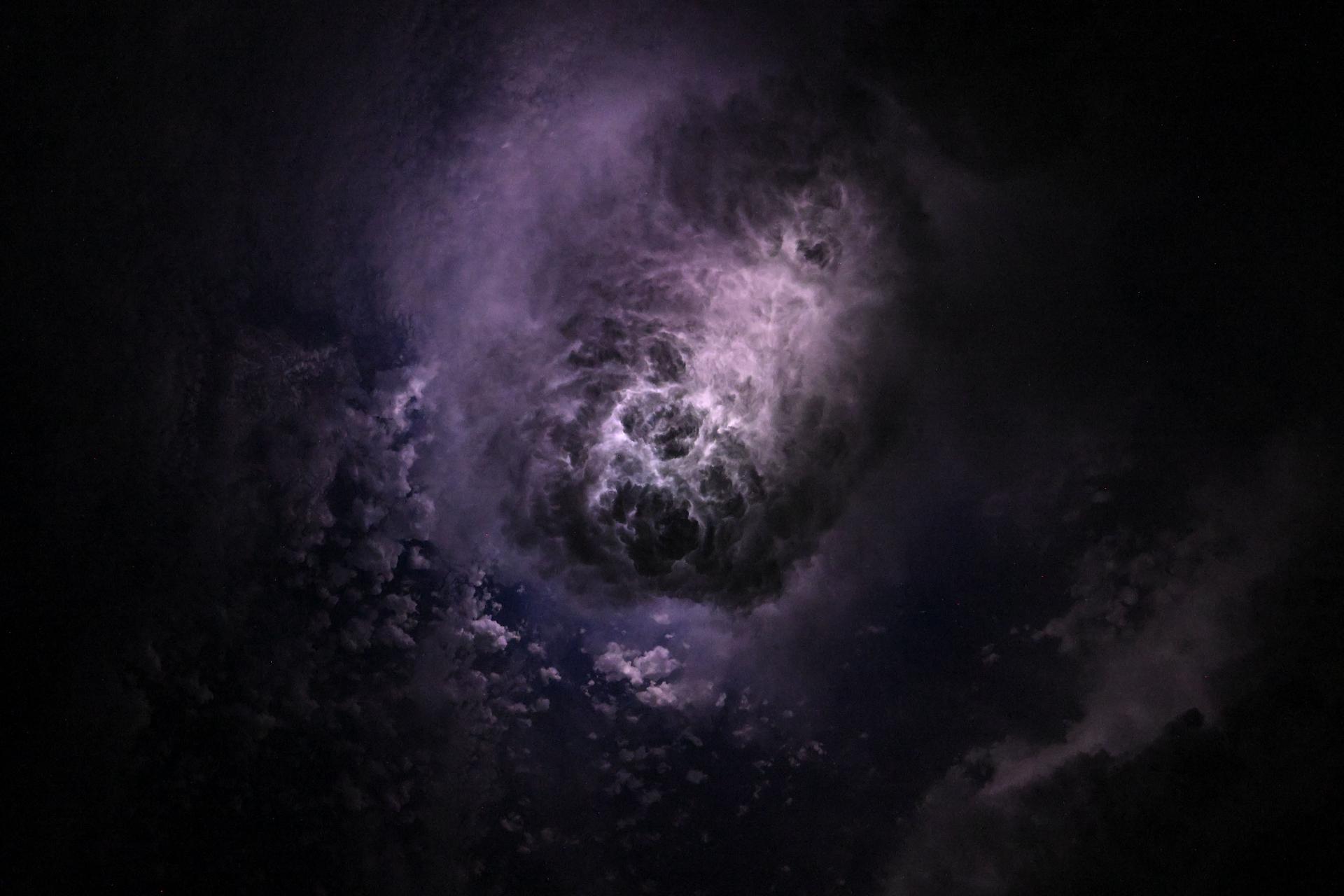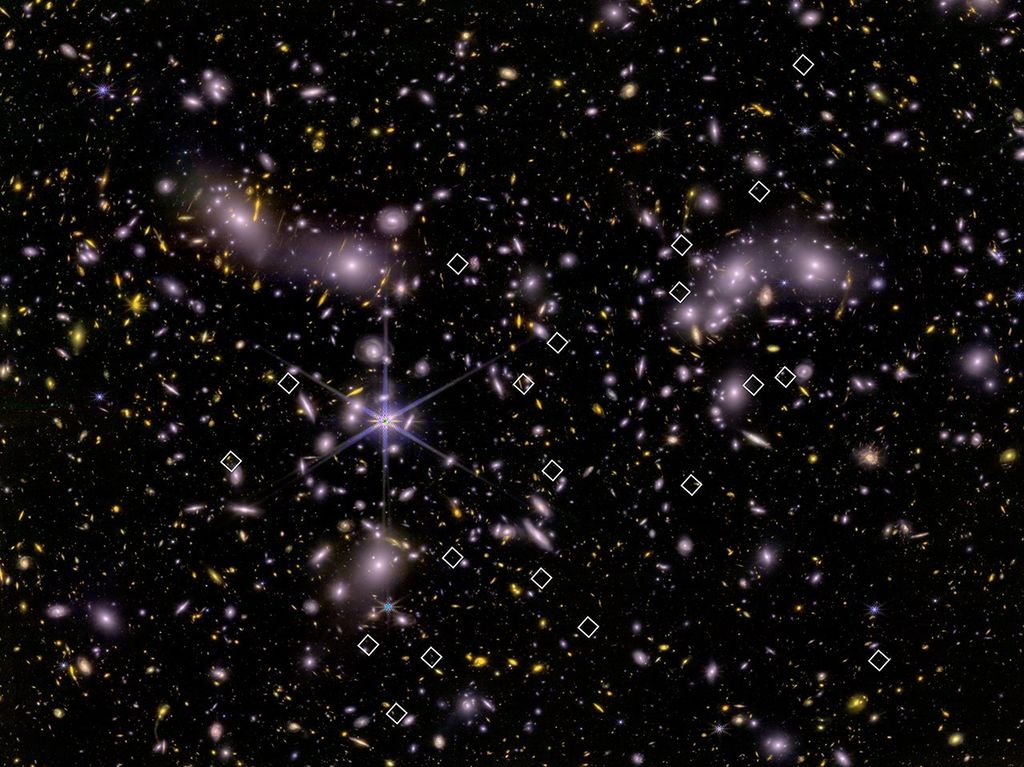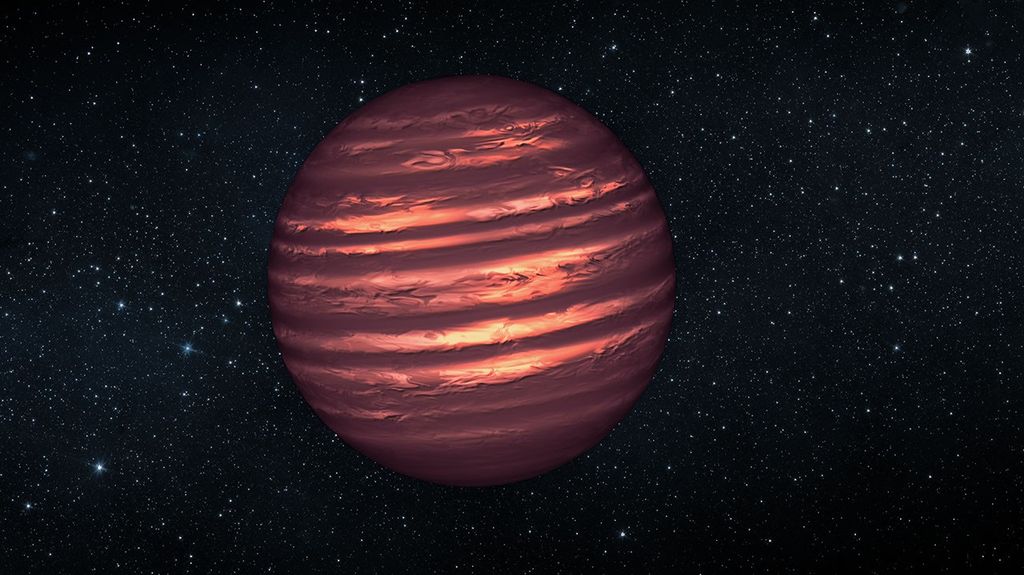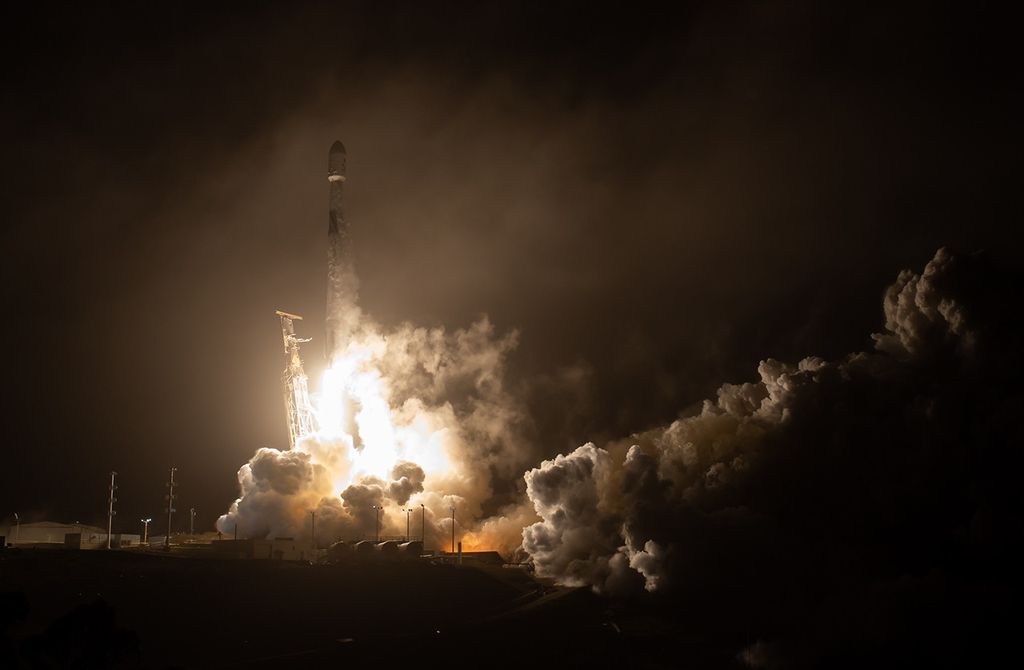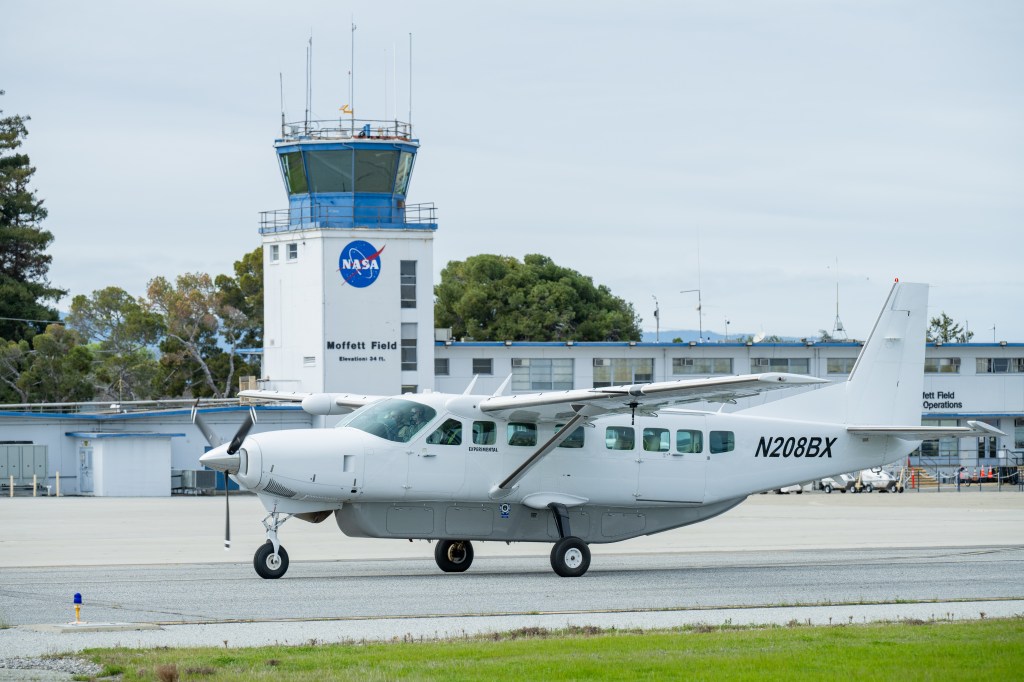Air Quality Measurements from OMI during the 2020 U.S. Wildfire Season
Unprecedented amounts of pollution were produced by multiple fires over the USA west coast in September 2020. Continental scale smoke plumes from these wildfires were observed by the Ozone Monitoring Instrument (OMI) on the Aura satellite for about five weeks since the onset of the fires in early September.
The intensity of the 2020 Pacific Northwest wildfire season has no precedent in this century, and it is only comparable to hemispheric scale megafires over thirty years ago such as the 1987 Yellowstone Park fires and the 1988 Great China Fire . Although the 2020 US west coast wildfire season was significantly more intense than in recent years, it is consistent with an increasing trend in fire frequency and intensity in this region observed over the last few years. In addition to casualties and economic losses, as well as deterioration of air quality in the vicinity of the fires, smoke plumes associated with fires in the Pacific Northwest have been found to reach the lower stratosphere where the residence time of carbonaceous aerosol particles is significantly longer, likely resulting in climate effects.
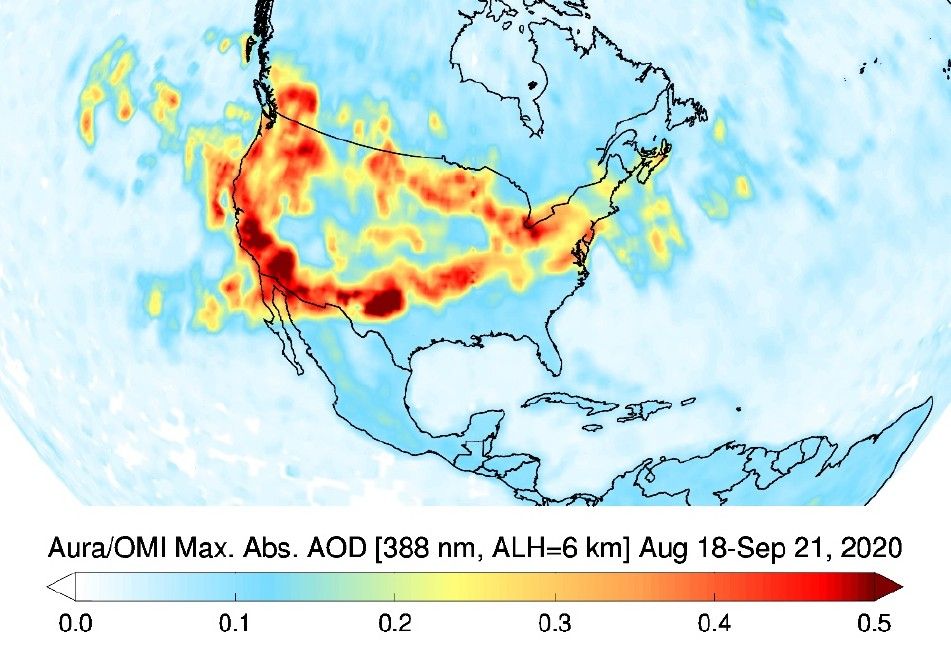

Satellite observations between August 18 and September 21, 2020 by the Aura OMI instrument show the spatial extent of the hemispheric scale smoke plume generated by fires in the US west coast in terms of retrieved 388 nm Aerosol Absorption Optical Depth (AAOD, left) and maximal formaldehyde (HCHO, right) slant column densities (SCDs). There are similarities and differences in the spatial distribution between aerosols and HCHO, as HCHO comes from both fire emissions and also biogenic emissions particularly over the southeastern U.S. Additionally, HCHO is also short-lived and the loading tends to be greater within fresh fire plumes and lower in aged plumes.
The two figures show the spatial extent of multiple smoke plumes from fires in the US west coast between August 18 and September 21. The spread of the plumes covered, at least partially, almost the entire contiguous United States, except for Florida. It also reached northern Mexico, southern Canada and both the Pacific and Atlantic Oceans. The plume travelled across the Atlantic Ocean and was detected as far as northern Europe.
Data Sources: The Aura OMI level 2 UV aerosol and HCHO products are available at the NASA Goddard Space Flight Center DAAC.
References: Omar Torres, Can Li (Code 614, NASA GSFC) and Hiren Jethva (USRA/GESTAR)
11.2020
OMI
Aura’s Ozone Monitoring Instrument (OMI) instrument can distinguish between aerosol types, such as smoke, dust, and sulfates, and measures cloud pressure and coverage, which provides data to derive tropospheric ozone.…
Learn More